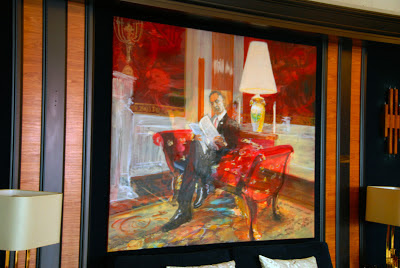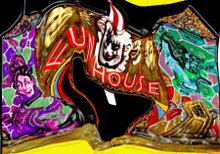A View of Marburg
Marburg is a lovely town.

It has no industry and was pretty much spared by the war. Walking from the hotel to the old city center one passes the botanical gardens and the Elisabeth church.

It has no industry and was pretty much spared by the war. Walking from the hotel to the old city center one passes the botanical gardens and the Elisabeth church.
Marburg is known as the Elisabethstadt, in honor of the generous Elisabeth of Thuringia, a princess of Hungary.
She lived from 1207 to 1231 and was married at the age of 14 (and widowed at 20). She used her dowry after her husbands death to build a hospital for children and was known for her charity. She died at a young age 4 years later and was canonized very soon after her death at the age of 24.
They began building the church the year after Elisabeth was made a saint in 1235 and was finished in 1283.
The Elisabeth church is one of the best examples of pure, early gothic German architecture.
In 1605 a lot of the interior decoration was destroyed by Landgraf Moritz in support of protestantism.
In the 1800s they actually celebrated both Protestant and Catholic services at the same time (havng divided up the church.
Most of the relics have been sent elsewhere, but the golden Elisabethschrein is the churches' most famous artifact.
Outside nextdoor you can see the remnants of other old medieval buildings.
The town center of Marburg is built on a high hill or little mountain. Here you can see some of the inner town from the street below the peak.
There are many many beautiful fachwerk (half-timbered) buildings.
I caught a reflection of the market place in this shop window.
Here is a direct view of what was reflected in the window.
Here is a view down on the Elisabethkirche from the castle on the hill.






































































